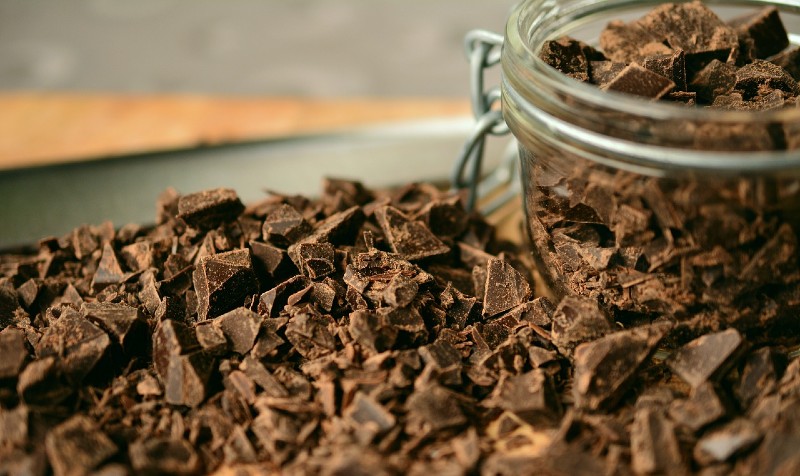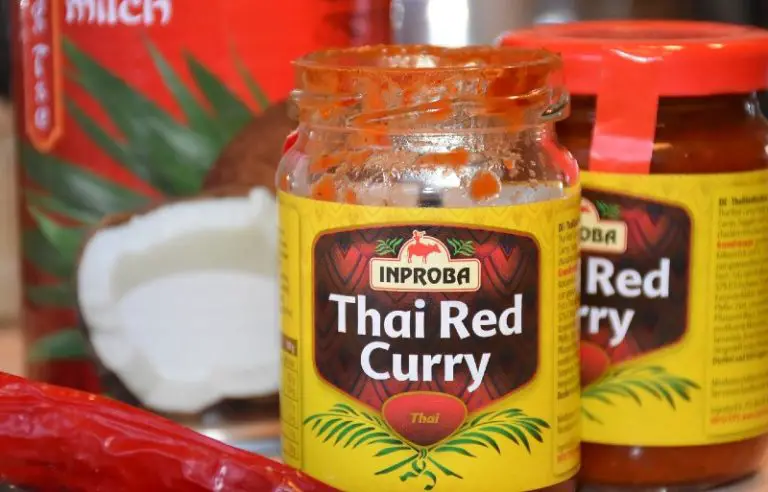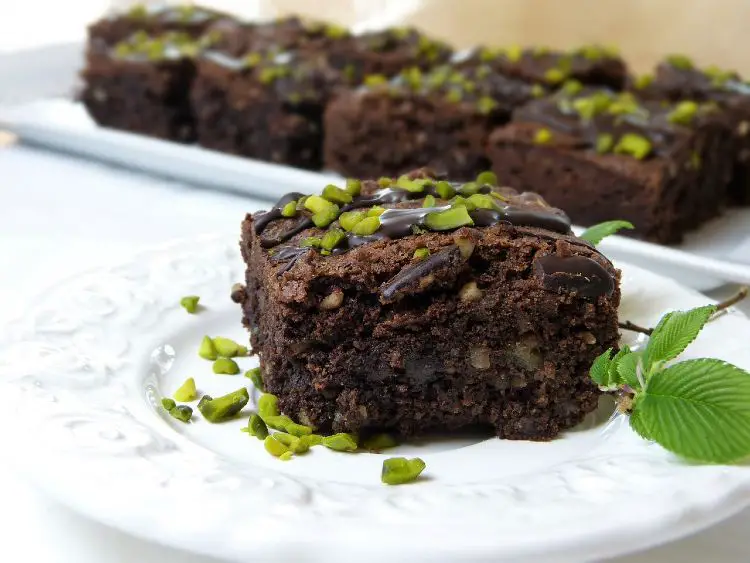Beyond Bittersweet: Chocolate Substitutes to Transform Your Baking!
Bittersweet chocolate is a rich and indulgent ingredient, gracing countless recipes with its deep, intense flavor. It’s a type of dark chocolate that, as its name suggests, beautifully balances bitter and sweet flavors. Typically, it contains less sugar than its semi-sweet counterpart and has a cocoa content that can range from 50% to about 70%, though the specifics might vary by brand and region.
From the center of molten lava cakes to the gooey chunks in a decadent cookie, bittersweet chocolate is an ingredient that can elevate a dessert to gourmet levels. It offers a mature flavor profile that makes it the chocolate of choice for many chefs and home bakers alike. Its relatively high cocoa content provides depth, allowing it to shine in dishes that require a pronounced chocolate essence.
However, the need for substitutes arises for several reasons, ranging from dietary restrictions to personal taste preferences, and even the occasional scarcity of this cherished ingredient.
List of Substitutes for Bittersweet Chocolate
Semi-Sweet Chocolate
Semi-sweet chocolate, often dubbed the favorite child of the chocolate family for many bakers, shares a sibling-like resemblance to bittersweet chocolate. The primary distinguishing factor between the two is their cocoa content and resulting sweetness. While bittersweet chocolate boasts a cocoa content ranging from 50% to 70%, semi-sweet chocolate typically resides in the 40% to 60% range. This difference translates to a slightly sweeter taste profile for the semi-sweet variety.
When and How to Use it Effectively as a Substitute
- Direct Replacement: In many recipes, especially those where chocolate isn’t the sole star of the show, you can directly substitute bittersweet chocolate with semi-sweet chocolate in a 1:1 ratio. Examples include cookies, brownies, or muffins, where other flavors are at play.
- Adjusting Sweetness: If you’re working on a dish where the nuanced flavor of the chocolate is pivotal, consider reducing the amount of added sugar elsewhere in the recipe to compensate for the increased sweetness of semi-sweet chocolate.
- Melting Characteristics: Semi-sweet chocolate tends to have a smooth and even melt, akin to bittersweet chocolate. However, be cautious when using it in recipes that require tempering or precise melting points.
- Textural Impact: In recipes that rely on the slightly drier finish of bittersweet chocolate, such as certain types of truffles or ganaches, the added sugar in semi-sweet chocolate might slightly alter the texture. Adjusting the other ingredients, like cream or butter, can help in achieving the desired consistency.
Dark Chocolate
Dark chocolate is an umbrella term, encompassing a range of chocolates from semi-sweet to extremely dark, with cocoa content ranging from 45% to 85% or more. This vast range means that the sweetness of dark chocolates can vary considerably. When choosing dark chocolate as a substitute for bittersweet:
- Check the Cocoa Percentage: Aim for dark chocolate that hovers around the 60%-70% range for a close match to bittersweet chocolate. This will ensure a somewhat similar balance of bitter and sweet notes.
- Tweak the Recipe: If using a particularly dark chocolate, consider adding a touch more sugar to the recipe. Conversely, if your dark chocolate is on the sweeter end, you might want to reduce the sugar slightly.
The Impact on the Texture and Final Outcome of Recipes
- Melting Properties: Dark chocolates, especially those with high cocoa content, may have a slightly different melting point and consistency when melted. They can be thicker and less smooth, which might require an adjustment in recipes like chocolate fondue or silky ganache.
- Moisture Retention: Darker chocolates can absorb more moisture due to their lower fat and sugar content. This can lead to drier baked goods unless compensated with additional fats or liquids.
- Flavor Depth: Dark chocolates, especially those with a cocoa content above 70%, can introduce a more profound, almost bitter flavor profile. This can be an advantage in certain recipes, lending a more gourmet touch.
Tips for Using Dark Chocolate as a Substitute
- Chop Evenly: To ensure consistent melting and distribution, chop the dark chocolate into uniform pieces.
- Watch the Heat: Dark chocolates, especially those with high cocoa content, can be more sensitive to heat. Melt slowly and cautiously to prevent scorching or seizing.
- Experiment and Taste: Especially if you’re unfamiliar with the specific brand or type of dark chocolate you’re using, take a moment to taste it and adjust your recipe accordingly.
Unsweetened Chocolate with Sugar
Unsweetened chocolate, as the name suggests, is chocolate in its purest form without the addition of sugar. It’s pure chocolate liquor-composed of cocoa solids and cocoa butter-that’s been cooled and solidified. This variety offers a robust, deeply chocolatey, and notably bitter taste.
Proportions to Achieve a Bittersweet Flavor
- Basic Ratio: For every ounce of bittersweet chocolate your recipe calls for, you can substitute with an ounce of unsweetened chocolate and add 1 tablespoon of granulated sugar.
- Adjusting for Preference: The above ratio provides a general guideline, but personal and recipe-specific preferences may warrant adjustments. For instance, if you’re making a dish where a slightly sweeter profile is acceptable, you might choose to add a tad more sugar.
- Liquid Considerations: Since you’re adding dry sugar to the mix, there might be a need to introduce a small amount of liquid to balance the consistency, especially in recipes where the texture of the batter or dough is critical.
Tips for Mixing and Blending
- Even Melting: When melting unsweetened chocolate along with sugar, ensure they are combined thoroughly. This ensures an even distribution of sweetness throughout.
- Avoiding Graininess: The added sugar can sometimes result in a grainy texture if not dissolved properly. Consider using finely granulated or caster sugar to ease dissolution, or melt the sugar with a bit of liquid before combining with the chocolate.
- Testing as You Go: Especially if you’re unfamiliar with this substitution method, it’s beneficial to taste as you mix. This way, you can make real-time adjustments to achieve the desired flavor.
Cocoa Powder and Butter
Cocoa powder is the result of processing cacao beans and removing the cocoa butter. It provides an intense chocolate flavor without the added fats from cocoa butter. When you don’t have bittersweet chocolate on hand, a combination of cocoa powder and butter can be a worthy substitute.
Creating a Bittersweet Chocolate Texture and Flavor
- General Conversion: For every ounce of bittersweet chocolate, combine 1 tablespoon of unsweetened cocoa powder with 1 tablespoon of sugar and 2 teaspoons of unsalted butter.
- Achieving the Right Consistency: The butter reintroduces the fat content that’s missing from the cocoa powder, ensuring you achieve a richness similar to that of actual chocolate. Ensure both ingredients are thoroughly mixed to get an even texture.
- Variations: Depending on the recipe and desired flavor intensity, you can adjust the quantity of cocoa powder. For instance, if you’re aiming for a deeper chocolate taste, consider adding an extra half tablespoon of cocoa powder.
Pros and Cons of Using This Substitute
Pros:
- Flexibility: Most bakers have cocoa powder and butter in their pantry, making this a convenient substitute.
- Control: By mixing the ingredients yourself, you have more control over the fat and sweetness levels, allowing for fine-tuning based on the specific requirements of your recipe.
Cons:
- Texture Variations: Depending on how it’s mixed, the cocoa and butter combination might not provide the exact same texture as melted bittersweet chocolate, especially in recipes where chocolate consistency is critical.
- Time-Consuming: Combining and adjusting the ingredients to get the desired consistency and flavor can be more time-consuming than simply melting bittersweet chocolate.
When Best to Use This Substitute
This cocoa powder and butter combination works best in recipes where the chocolate’s consistency isn’t the primary focus. For instance:
- Baked Goods: Brownies, muffins, and cakes can benefit from the intense flavor of the cocoa while being forgiving about the texture.
- Sauces: Chocolate sauces or syrups for desserts or pancakes can be enhanced using this mix.
Chocolate Chips
Chocolate chips, small droplets of chocolate goodness, are a staple in many kitchens, predominantly used for cookie-making. However, when in a bind, these chips can serve as an alternative to bittersweet chocolate bars. Typically, they are made from semi-sweet chocolate, though variations exist, including milk, dark, and white chocolate chips.
Substitution Ratio
- Basic Substitution: Generally, for every ounce of bittersweet chocolate your recipe demands, you can replace with an equal weight of chocolate chips. If using volume measurements, keep in mind that chocolate chips might not pack the same way as chopped chocolate, so adjustments might be necessary.
- Sweetness Factor: Since most chocolate chips are semi-sweet, they will introduce a bit more sugar into your recipe. Depending on the desired final product, you might need to slightly reduce other sugar sources.
- Melting Characteristics: Chocolate chips often contain stabilizers to maintain their shape during baking. This means they may not melt as smoothly or consistently as bittersweet chocolate bars. If your recipe relies heavily on a silky-smooth chocolate texture, chocolate chips might not be the best substitute without some additional tweaking.
Tips for Using Chocolate Chips as a Substitute
- Stir Constantly When Melting: Due to stabilizers, it’s essential to continuously stir chocolate chips if melting them to avoid uneven consistency or burning.
- Monitor Sweetness: Taste the mixture after adding chocolate chips to gauge if any adjustment in sweetness is required.
- Consider Quality: Not all chocolate chips are created equal. For best results, opt for higher-quality brands which tend to have fewer additives and offer a richer flavor.
- Experiment with Varieties: Beyond the traditional semi-sweet chocolate chips, consider dark chocolate chips or bittersweet chocolate chips, if available, to get closer to the desired flavor profile.
Dutch-Processed Cocoa Powder
Dutch-processed cocoa powder (or Dutched cocoa) is cocoa powder that has been treated with an alkalizing agent, usually potassium carbonate. This process darkens the powder, making it richer in color, and mellows its flavor, removing some of the natural bitterness. Due to its distinctive characteristics, Dutch-processed cocoa can be used as a substitute for bittersweet chocolate with a few adjustments.
Key Differences and Characteristics
- Flavor Profile: Dutch-processed cocoa is less acidic and possesses a smoother, milder chocolate flavor compared to natural cocoa powder. It lacks the sharpness that some find characteristic of traditional cocoa.
- Color and Appearance: The alkalizing process imparts a deep, dark hue to the cocoa, which can give dishes a rich chocolatey look.
- Chemical Properties: The removal of acidity means that Dutch-processed cocoa does not react with alkaline leavening agents like baking soda. Instead, it’s often paired with baking powder in recipes.
Guidelines for Substitution
- General Ratio: To replace an ounce of bittersweet chocolate, use 3 tablespoons of Dutch-processed cocoa, 1.5 tablespoons of sugar (adjust based on desired sweetness), and 2 teaspoons of butter or another fat.
- Texture Considerations: Dutch-processed cocoa, when mixed with fats and sugars, can emulate the texture of melted chocolate to some extent. However, this mixture may be a bit thinner than melted bittersweet chocolate, so you may need to adjust other ingredients accordingly.
- Leavening Agent Compatibility: If your recipe calls for baking soda, you may need to adjust and use baking powder instead when opting for Dutch-processed cocoa.
Best Applications for Dutch-Processed Cocoa
- Baked Goods: Ideal for cakes, brownies, and cookies where a deep color and smooth chocolate flavor are desired.
- Hot Cocoa: Offers a rich and mellow chocolate drink without overpowering bitterness.
- Sauces and Frostings: Provides a consistent, smooth, and deep chocolatey look and taste.
Carob
Carob comes from the dried pods of the carob tree, native to the Mediterranean. It is often ground into a powder and has been utilized as a chocolate substitute for those with allergies or dietary restrictions, or simply for those seeking a caffeine-free alternative. With a naturally sweet flavor, carob can emulate some of chocolate’s characteristics, but it also possesses distinct differences.
Taste and Texture Differences
- Flavor Profile: While carob has a sweet and somewhat earthy taste, it lacks the bitterness commonly associated with chocolate. It can be described as mildly fruity, with hints of caramel or toasted sugar.
- Texture: Carob powder is less fatty than cocoa powder, which can lead to a different mouthfeel when used in recipes.
- Color: Carob tends to be a little lighter than most chocolates, so the final product might not achieve the deep, rich hue that you’d expect from a chocolate-based dish.
Guidelines for Substitution
- General Ratio: For recipes calling for bittersweet chocolate, you can replace each ounce of chocolate with approximately 3 tablespoons of carob powder.
- Sweetness Adjustments: Since carob is naturally sweeter, you might want to reduce the sugar in your recipe. Start by decreasing about 25% of the sugar and adjust based on taste.
- Fat Considerations: Given the reduced fat content in carob, you might need to add a small amount of fat (like butter or oil) to achieve a comparable richness to bittersweet chocolate.
When to Use Carob
- Dietary Restrictions: Carob is caffeine-free and theobromine-free, making it suitable for those with sensitivities or allergies to these compounds found in chocolate.
- For Pets: Theobromine in chocolate can be toxic to dogs. If you’re crafting treats for your furry friends and want a chocolate-like flavor, carob is a safe and tasty alternative.
- Distinct Flavor Creations: If you’re looking to introduce a new flavor profile to your baking or cooking that’s reminiscent of but distinct from chocolate, carob offers a unique taste experience.
Factors to Consider When Choosing Substitutes
When embarking on the journey of finding the perfect substitute for bittersweet chocolate, several crucial factors come into play. Each substitute brings its own unique attributes to the table, and selecting the right one requires careful consideration of the following factors:
Cocoa Content and Intensity
The cocoa content of bittersweet chocolate largely determines its level of bitterness and chocolate flavor. Substitutes with varying cocoa percentages will impact the overall taste of your dish. Higher cocoa content substitutes will offer a more intense chocolate flavor, while lower cocoa content substitutes may be milder in taste.
Sweetness Level
Bittersweet chocolate’s restrained sweetness sets it apart. When choosing a substitute, take note of the sweetness level, as some alternatives may be sweeter or less sweet than bittersweet chocolate. Balancing the sweetness is vital to maintaining the intended flavor profile of your recipe.
Texture and Consistency
Bittersweet chocolate’s creamy texture and ability to melt smoothly contribute to its versatility in both baking and cooking. Substitutes must replicate this texture to ensure the desired outcome in your dishes. Consider whether the substitute is solid or requires additional preparation to achieve the proper consistency.
Frequently Asked Questions (FAQs)
Can I directly replace bittersweet chocolate with dark chocolate in any recipe?
Generally, yes, especially if the dark chocolate’s cocoa content is between 60-70%. However, due to varying sugar content in different dark chocolates, you might need to adjust the amount of added sugar in the recipe to achieve the desired sweetness.
Why might some substitutes not melt as well as bittersweet chocolate?
The melting properties of chocolate largely depend on its fat content and the presence of other additives. Chocolates with a higher cocoa butter content melt smoother, while those with additives or stabilizers might not have the same fluid consistency when melted.
Is white chocolate a good substitute for bittersweet chocolate?
White chocolate lacks cocoa solids, which give bittersweet chocolate its distinctive flavor and color. While it can provide a creamy texture, white chocolate will introduce a very different flavor profile. It can be used as a substitute in some recipes but expect a significant change in taste and appearance.





